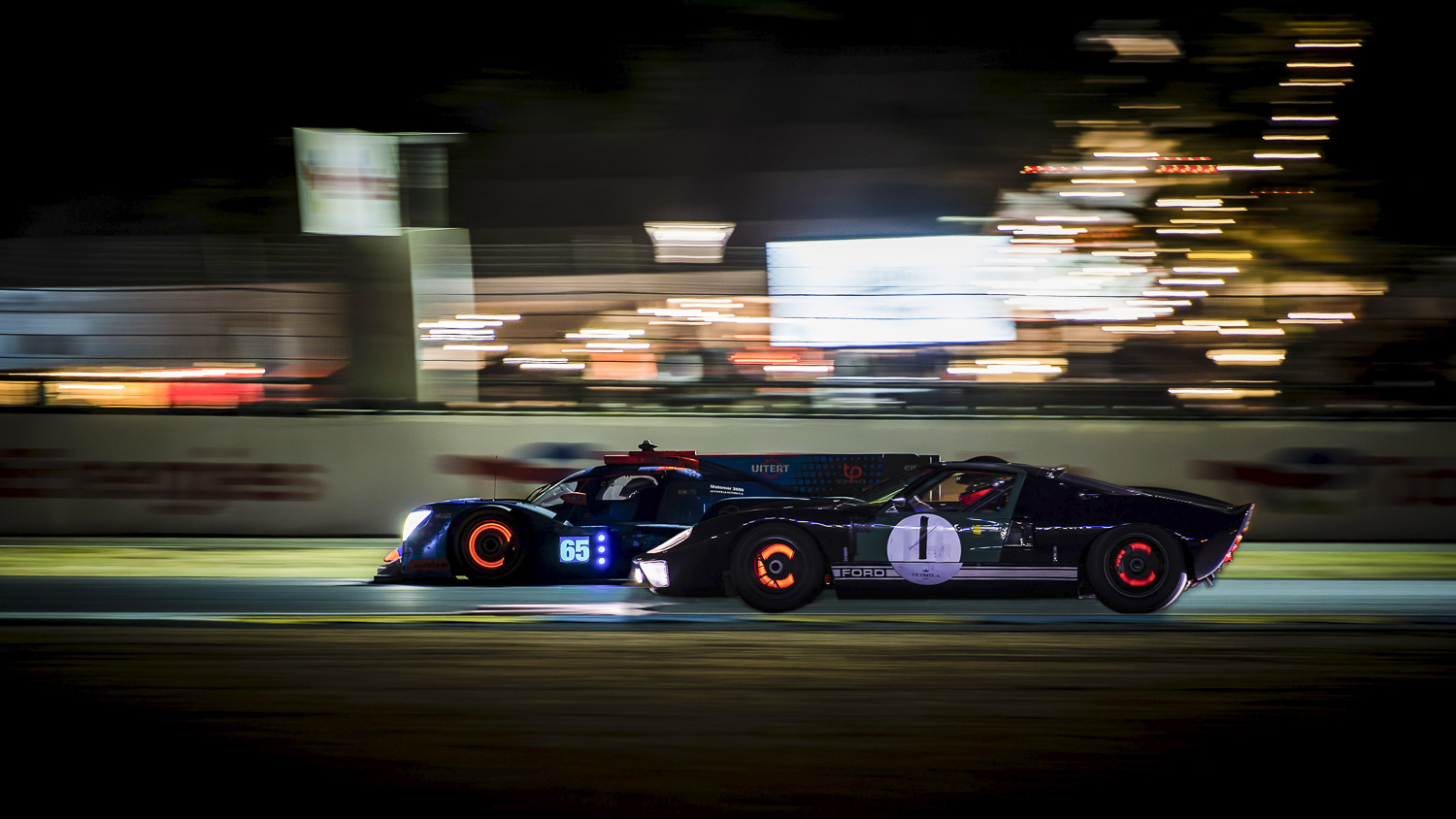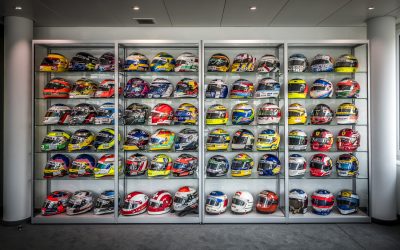One of the fab things about being a motorsport photographer is some of the amazing events I get to shoot at. Some are more special and significant than others. Non more so than when it is a point in history at an iconic track. This year I travelled 100 years of Le Mans history in 3 weeks at the famous Circuit de la Sarthe.
Le Mans 24 Hours vs Le Mans Classic
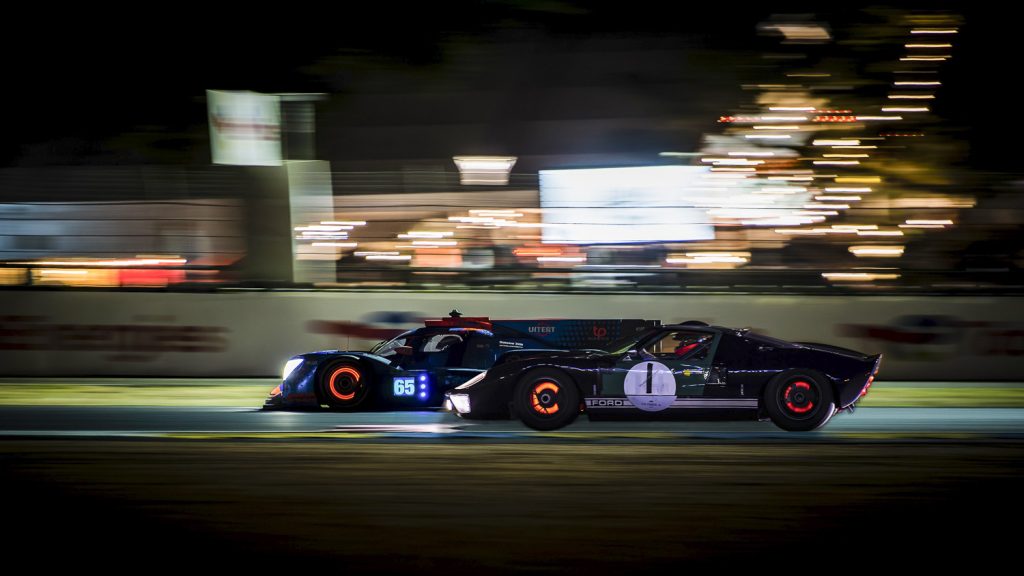
What’s the difference?
The Le Mans 24Hr (24 Heures du Mans) is ‘a’ 24 hour race. All the cars start together on Saturday afternoon and 24 hours later the chequered flag greets the winner. The Le Mans Classic is 24 hours ‘of’ racing. The cars are split into 6 plateau (grids) each will compete in three 45 minute races across 24 hours with at least one race being in the dark.
Le Mans 24 Hours
First up was the Centenary 24 Hours of Le Mans. First held in 1923, this was to be the 91st running of this epic race. This year’s special centenary race attracted a staggering 325,000 spectators to the circuit. World War II and the rebuilding of France got in the way of the other 9 races. Much of the original route of the track is still in use along with its iconic landmarks and traditions.
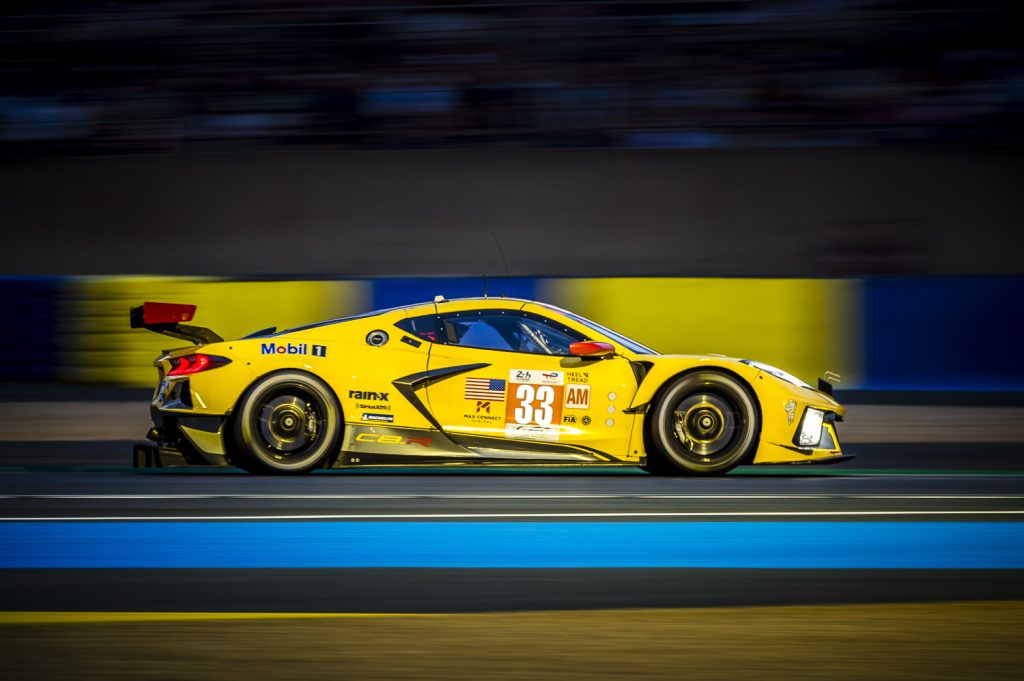
In 1995 the now annual Driver’s Parade was started. brought in to appease the locals having their town taken over and for those that could not afford the tickets. Crowds of fans line the street through Le Mans town centre, up to 10 deep in places. All keen to see their heroes and nowadays to catch any souvenirs thrown by the drivers as they drive past. I have not covered this part of the event before… the atmosphere is mega!!
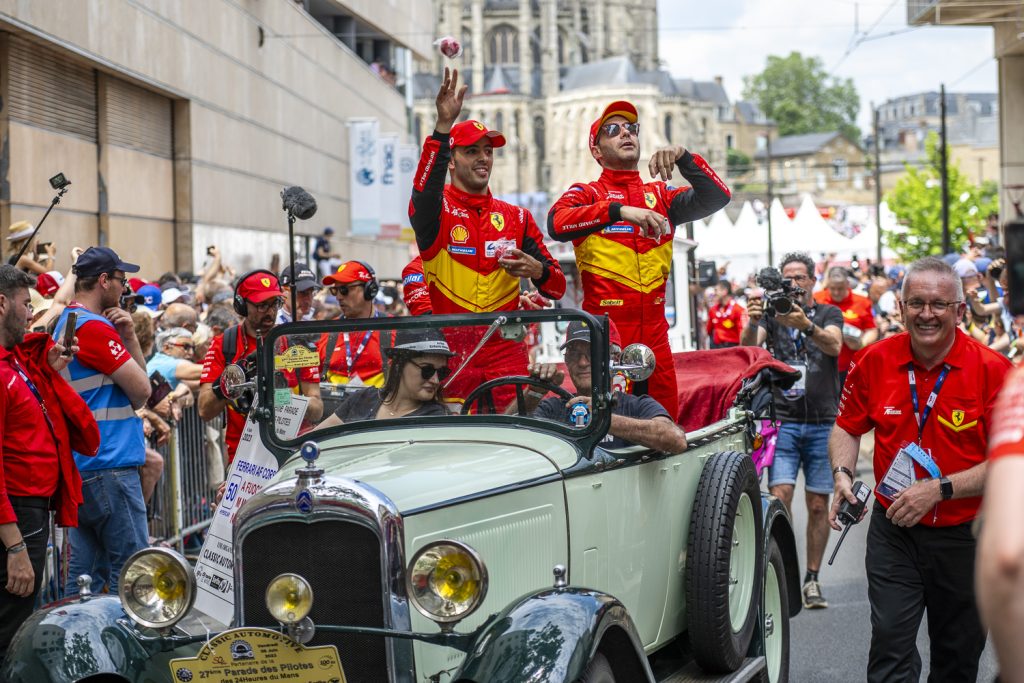

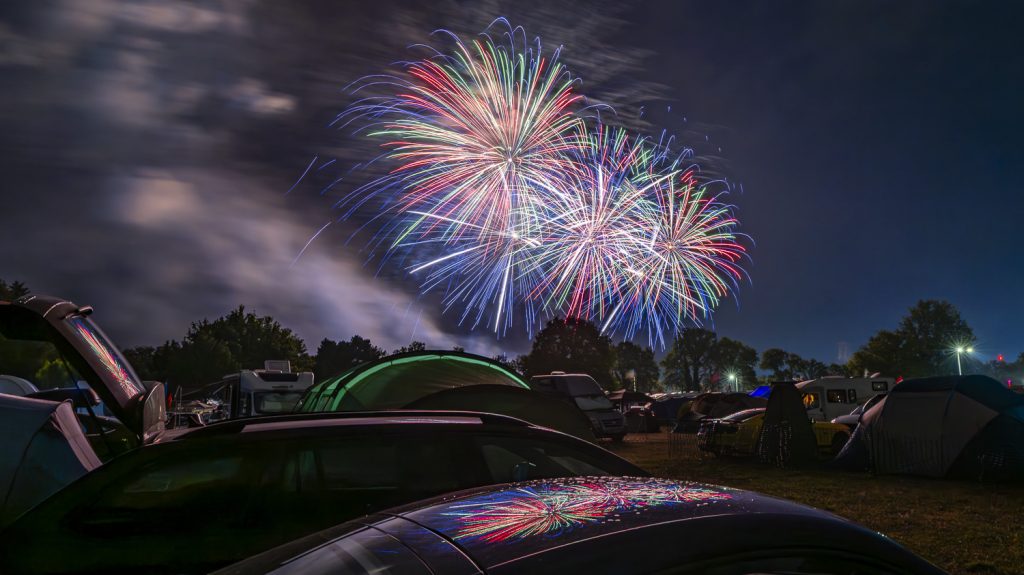
Traditions and ceremonies dealt with, the concerts and fireworks were done, it was time to get down to business. Race Day had arrived, these modern computerised rocket ships on wheels tore across the Start Line. Ahead of them lay 24 hours lapping around the most iconic motor racing circuit in the world.
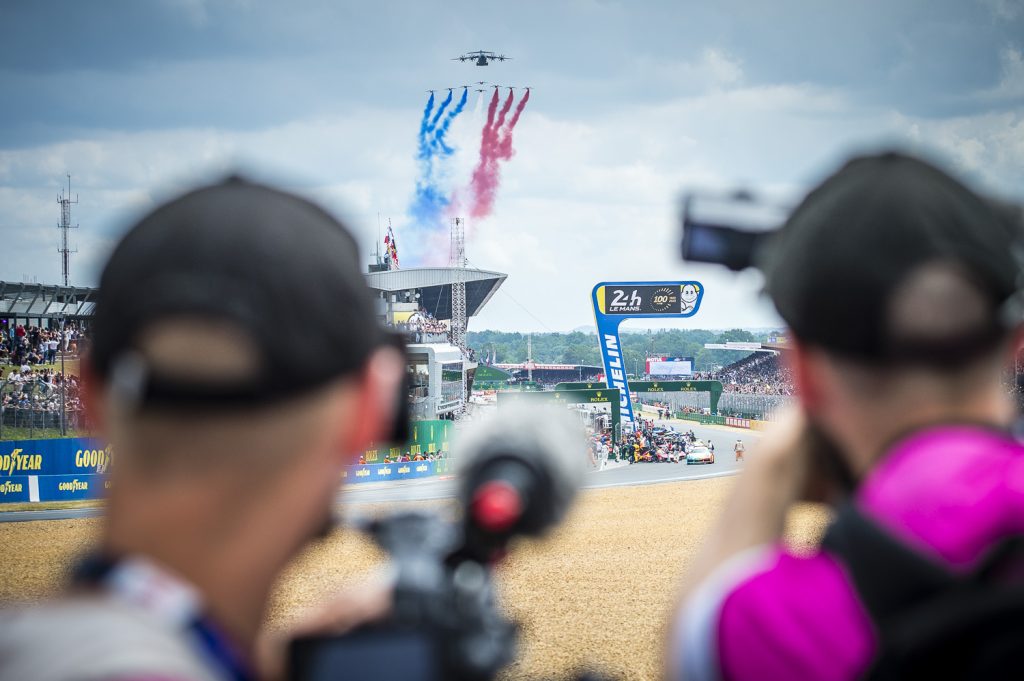
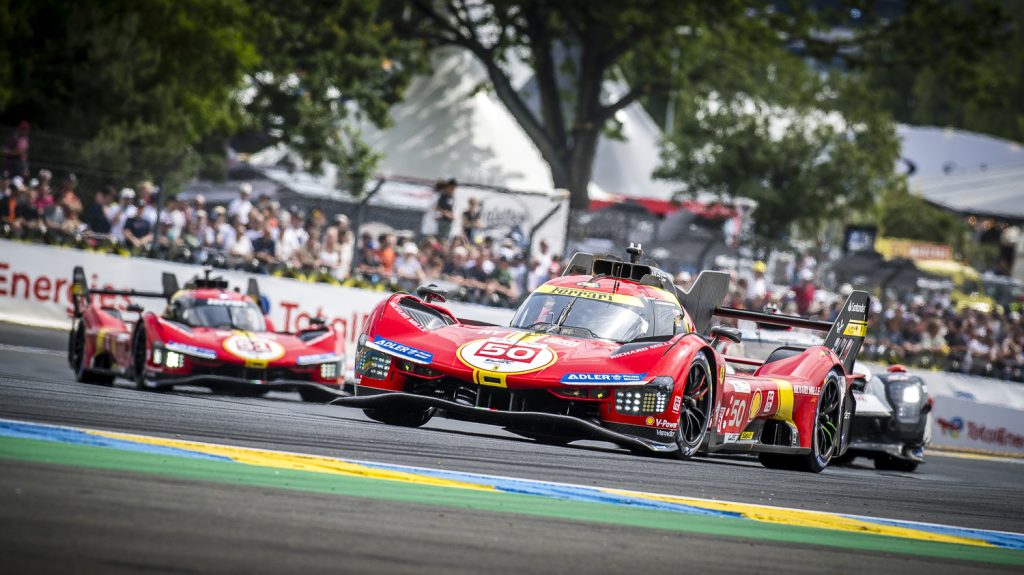
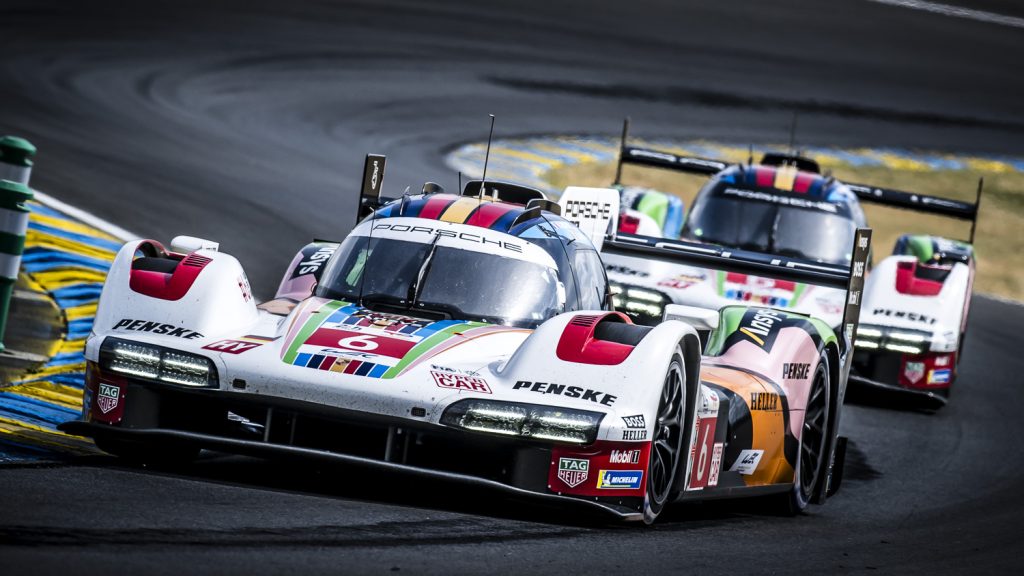

Into the night….
Now I am convinced that if you lay a collection of photos out on a table and asked even the most non-motorsporty (I’m sure it is a word…tis now!) person to pick out the 1 from Le Mans…. I guarantee they’ll pick out the one in the dark. To me this what makes the 24 Heures du Mans so special for spectators.
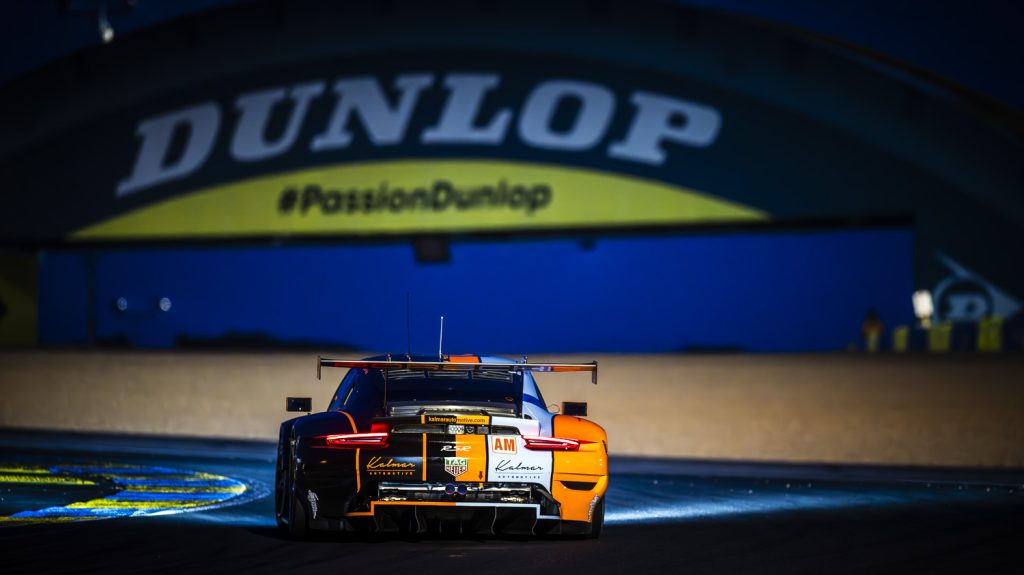
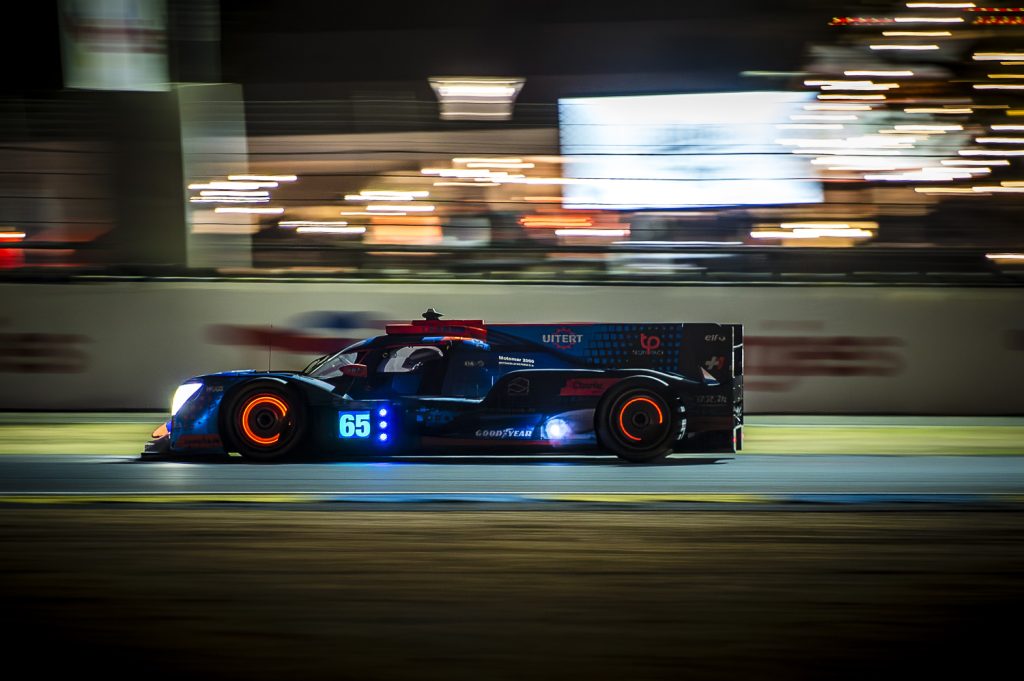
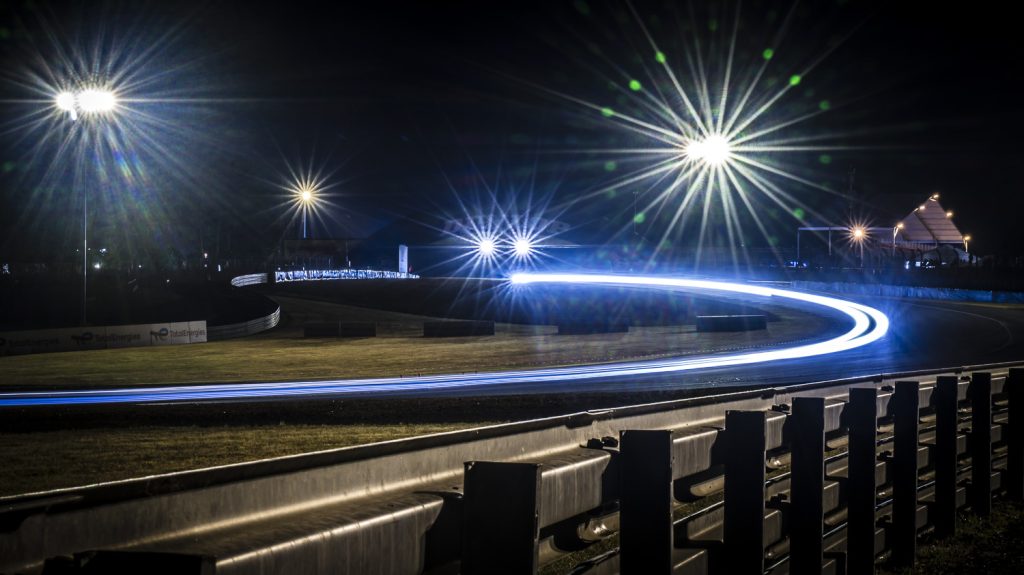
Where’s the best place to be at night?
In the Pit lane! Overhead lights blazing down on the crew as they wait their car to arrive. Then burst into action…. with crews of barely half what we see in an F1 Pit Crew it is amazing to watch the speed of the mechanics.
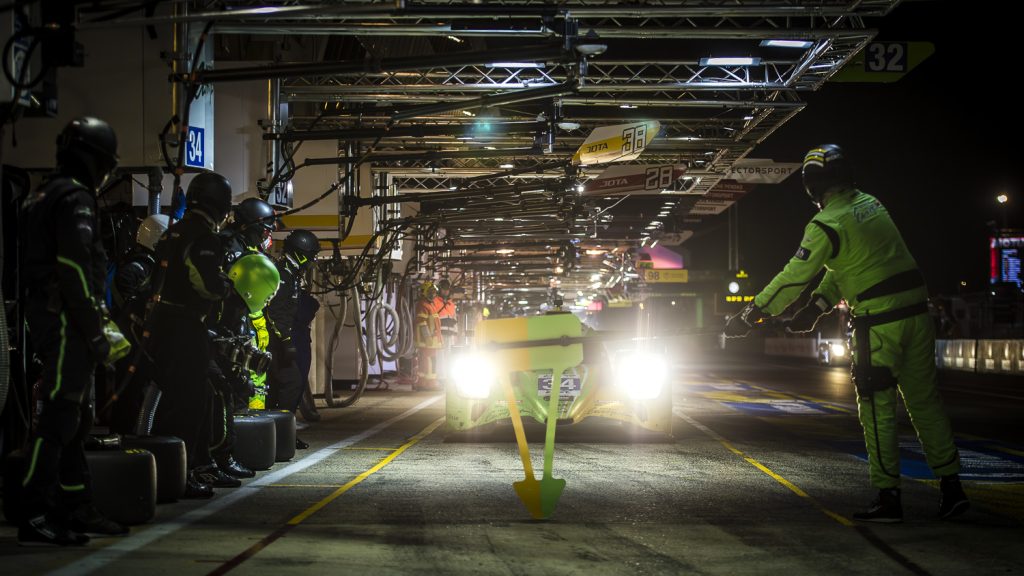

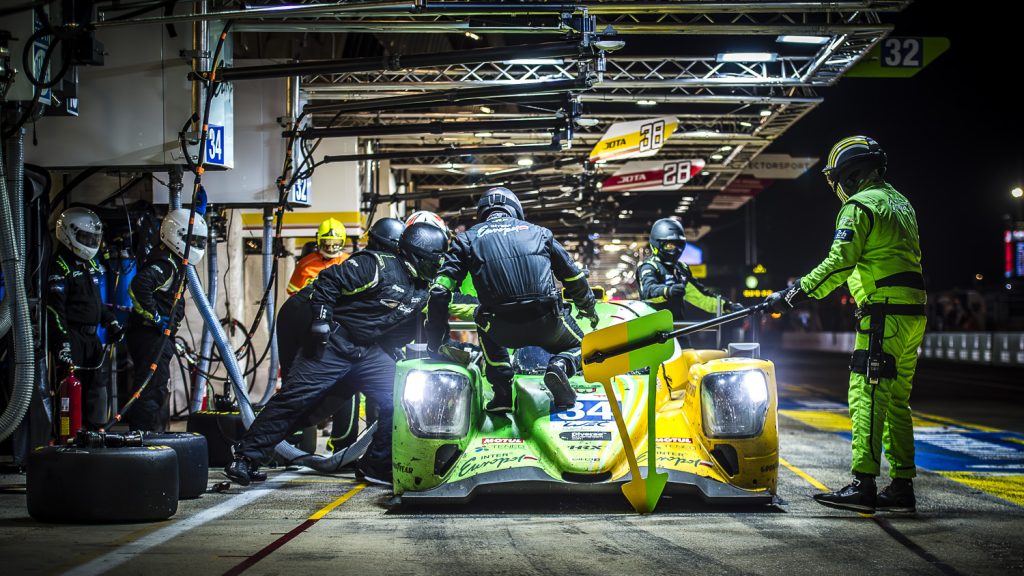
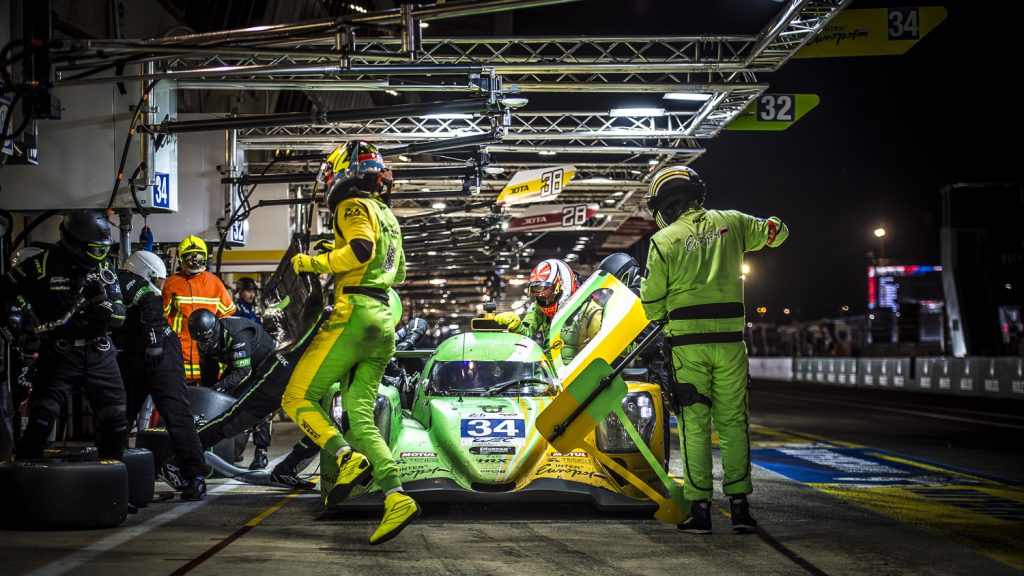
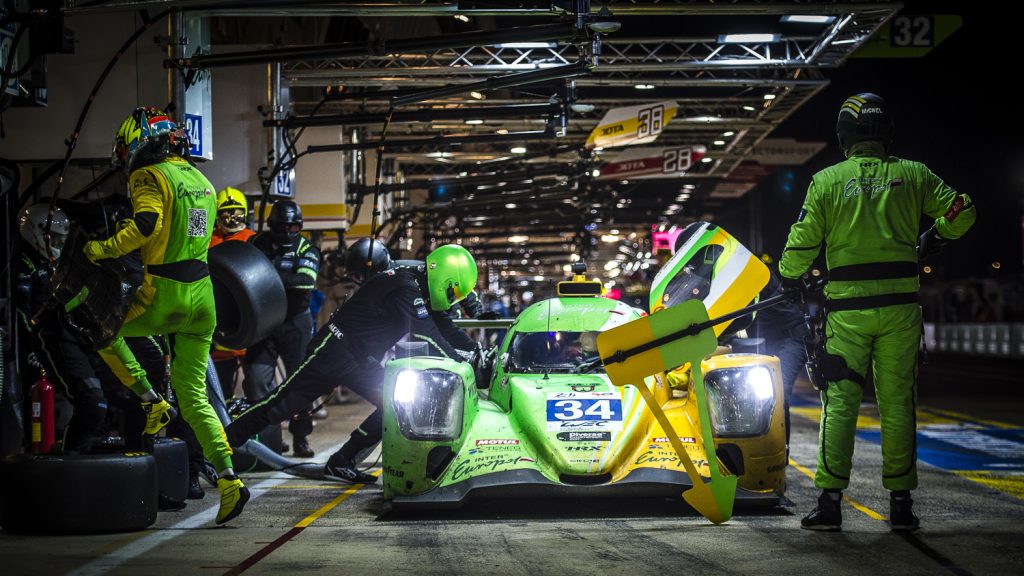
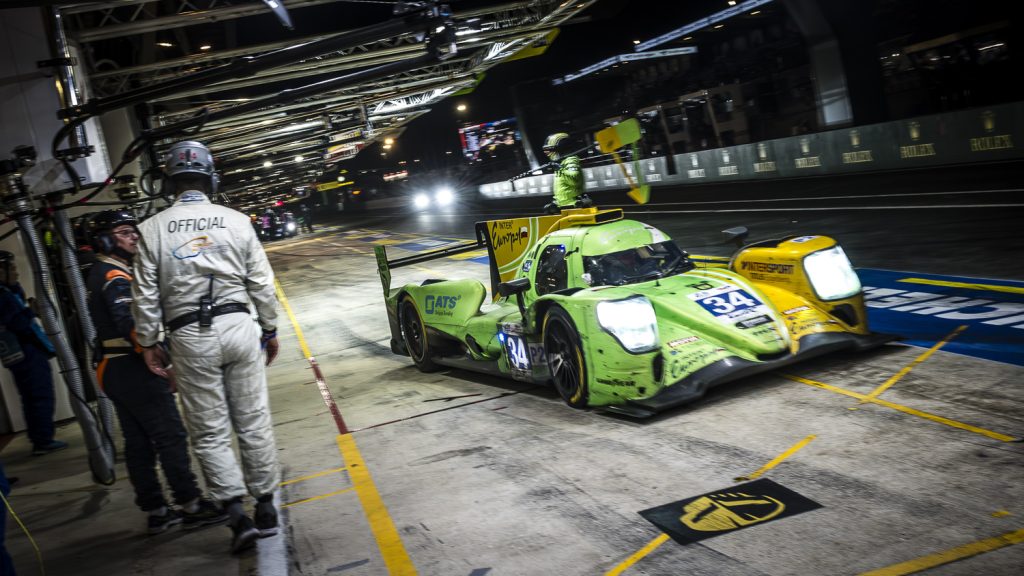
Unlike the 20 mechanics in an F1 Pit Crew all descending on the car at once, sending it away in just over 2 seconds. Only 2 wheel guns and 4 mechanics are allowed in the Le Mans 24 Pit Lane. They cannot start until the fuel hose is released and clear of the car. Barely 2 mins 30 seconds and the car was on it’s way with 4 new tyres, a new driver and a full tank of gas (…and I’m wearing sunglasses… HIT IT)
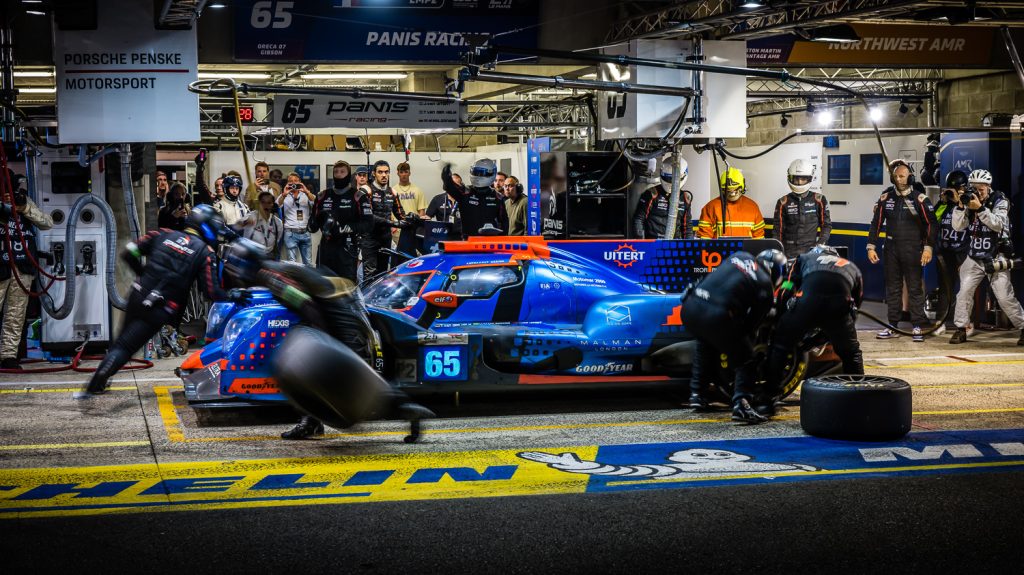
The cars barrelled on through the night. Rain at far end of circuit destroying many hopes as cars collide or end up in the barriers. 342 laps, 2895.7 miles later, Ferrari 499P Hypercar 51 eventually coming home to take the historic chequered flag.
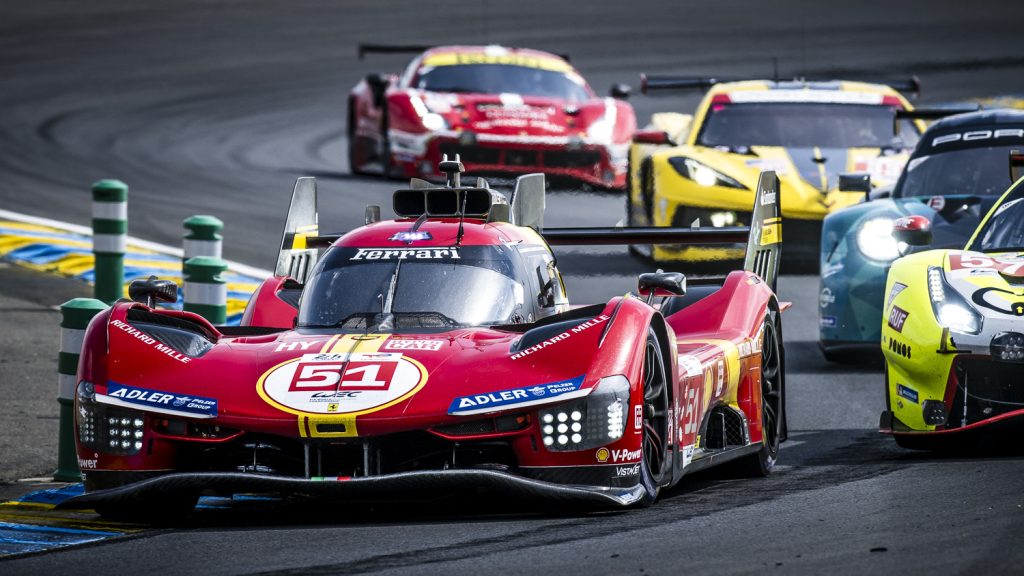
Le Mans Classic
5500 images processed and selections sent to clients from LM24, the phone goes and I’m heading back again. Joining the record breaking 235,000 classic racing fans attended this year’s, 11th running of the Peter Auto Le Mans Classic.
This time I have clients taking part in 2 of the plateau/grids of the Le Mans Classic. Looking down the entry list of 800 racing cars formed into the 6 grids, it’s amazing to see a few cars that were built in 1923. I felt I had literally covered 100 years of Le Mans in 3 weeks….
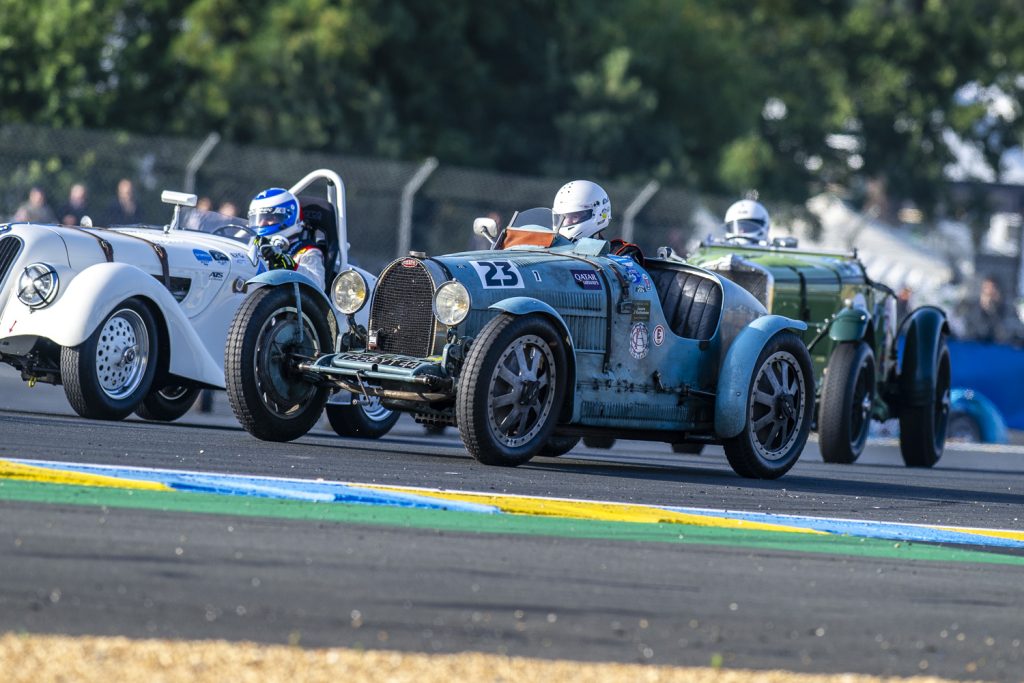
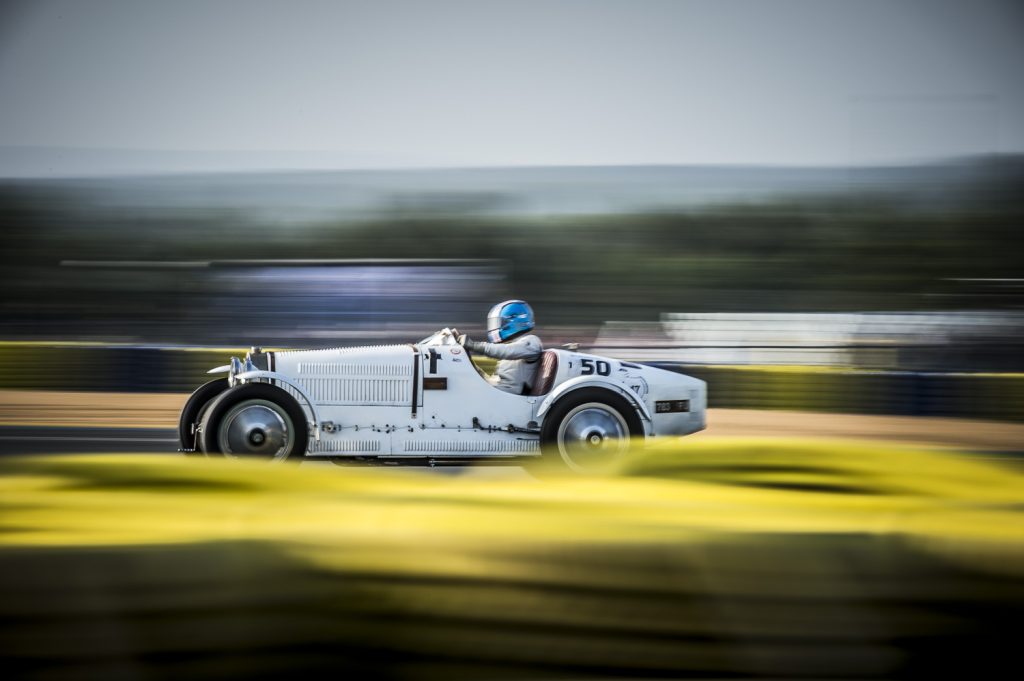
These early race cars were often sport or touring road cars of the period and almost always had no seat belts. They race as ‘in period’ today so imagine flying down the Mulsanne Straight at over 100mph on a slippy leather bench-seat with nothing strapping you in!!!
Further down the grids, the years get progressively more modern. From the single seater cars of the 1930s and 40s, through the Jaguar E Types and Ford GT40s of the 1950s and 60s. The more recognisable saloon cars shapes of the 70s and 80s. All the way to Le Mans specials like Group C racers.
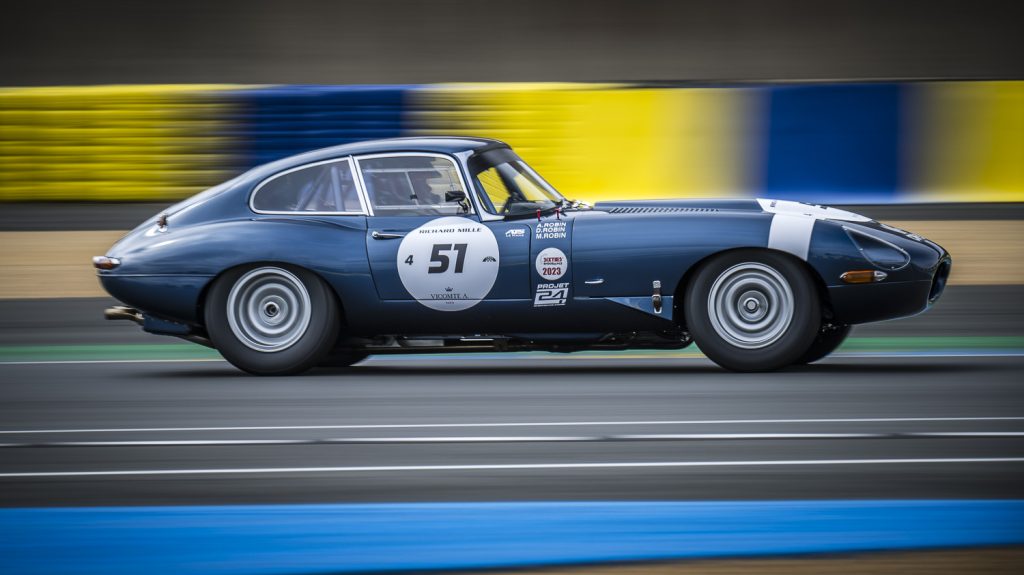
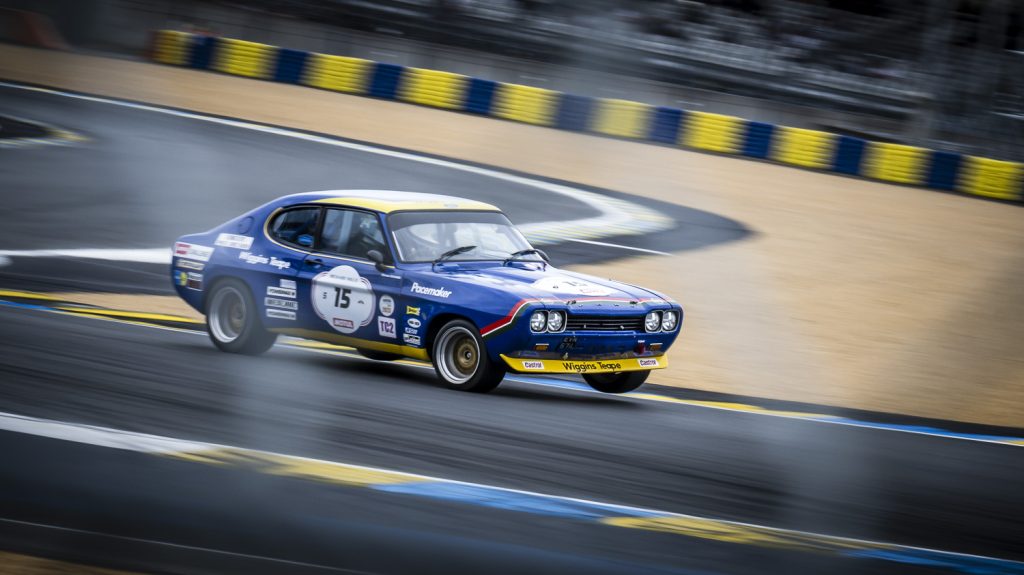
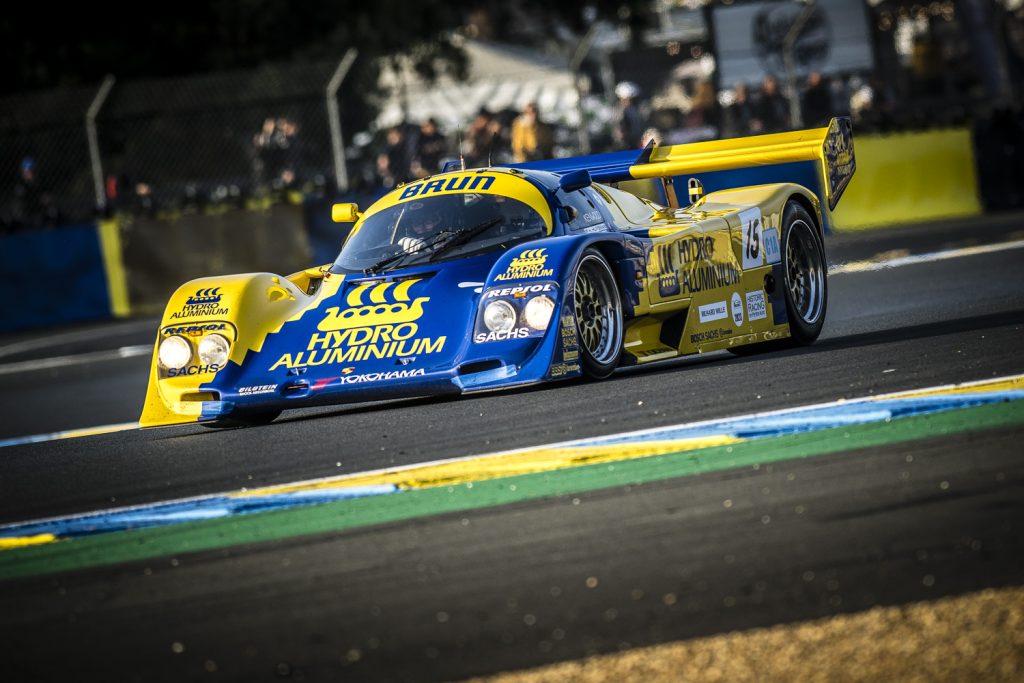
A Classic night at Le Mans…
Le Mans Classic at night is just as exciting at the modern Le Mans 24 Hour…. Not quite as many glowing brake discs, though some were trying hard.

The modern fuel injection systems in the LMP cars burn smart fuels efficiently. They produce small crisp blue shot of flame at the exhaust as the drivers lift and brake. Classic cars burn is a different petrol fuel and result is what there were more of, was flames….
Even in daylight you can’t miss them…. but as the light fell into darkness….lots and lots of bright yellow flames.

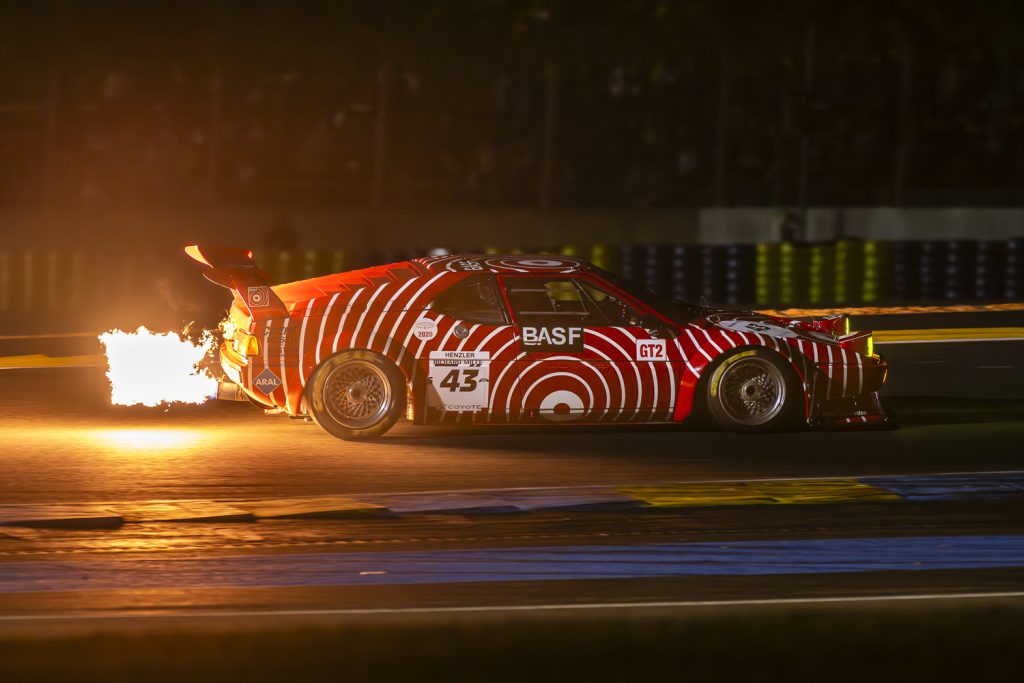
As darkness fully closed in so did the rain… now we had the treat of flames and rain in the cars lights. A photographer’s dream.
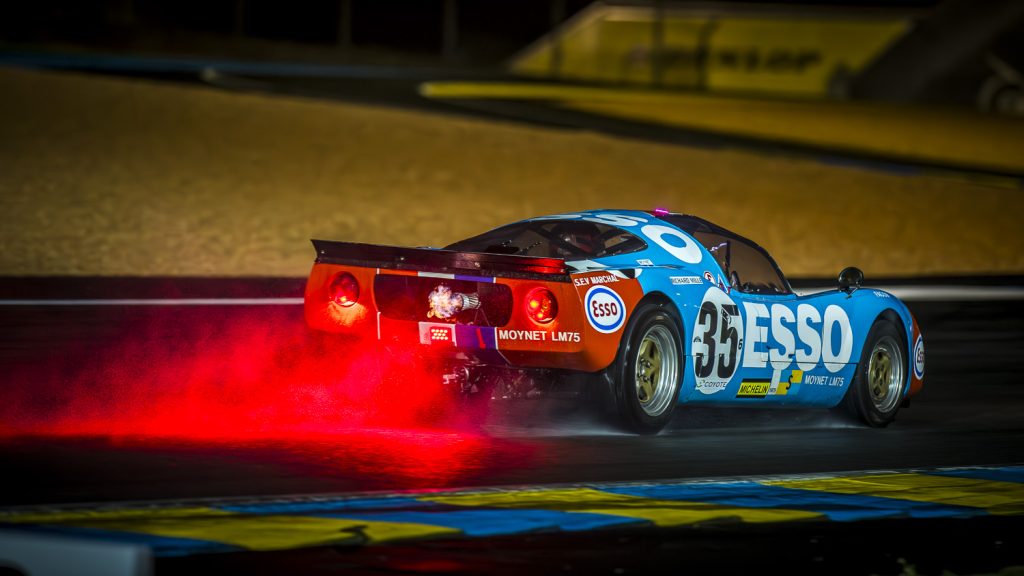
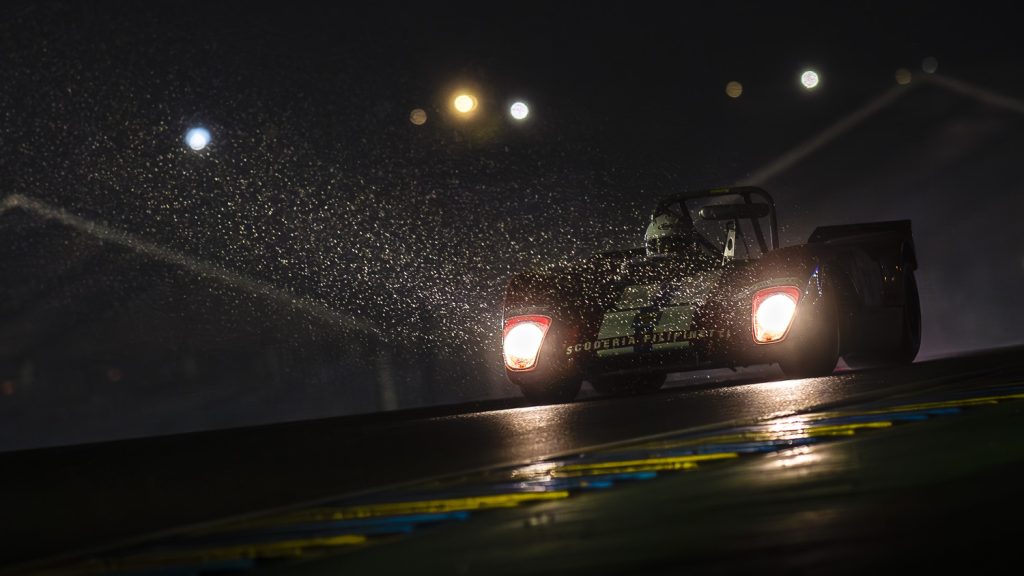
It’s often true that if you brave out the rain you’ll be rewarded with a great sunset or dawn. We didn’t get much of a sunrise at LM24, but LMC made up for it with some amazing morning light.
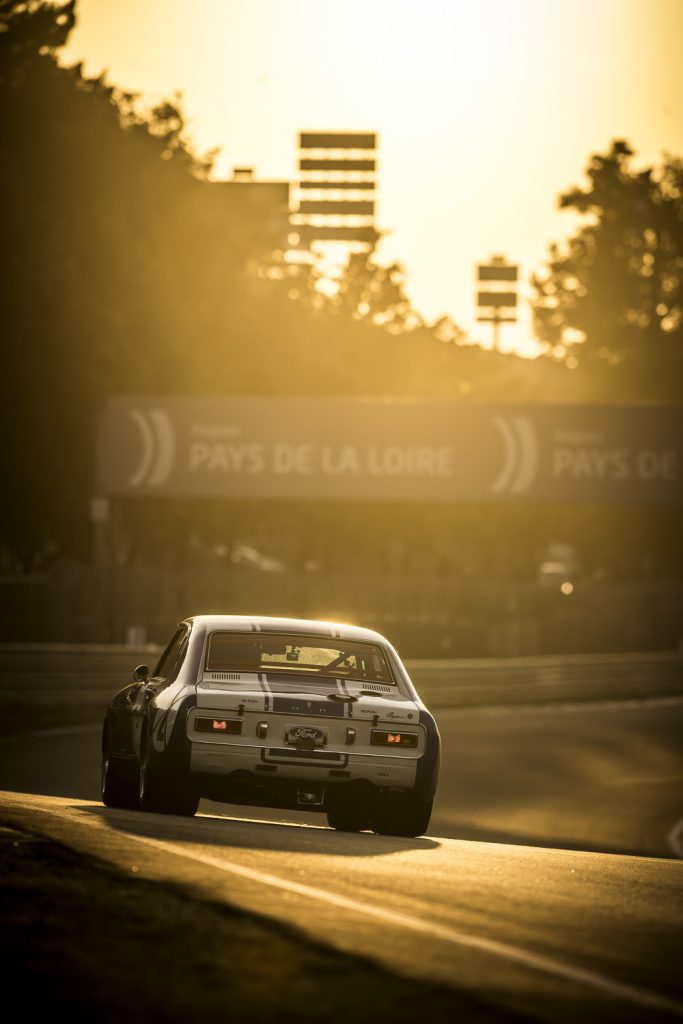
Are you free in the morning?
Being a professional photographer we have to be adaptable. During the racing I was also shooting content in the spectator village for AC Cars (see Automotive page). As we wrapped on Sunday after the racing, the PR team today me they had secured access to the track for 2 hours the next morning. Extend my hotel for 1 night, quick change of my EuroTunnel train time and we got the job done!
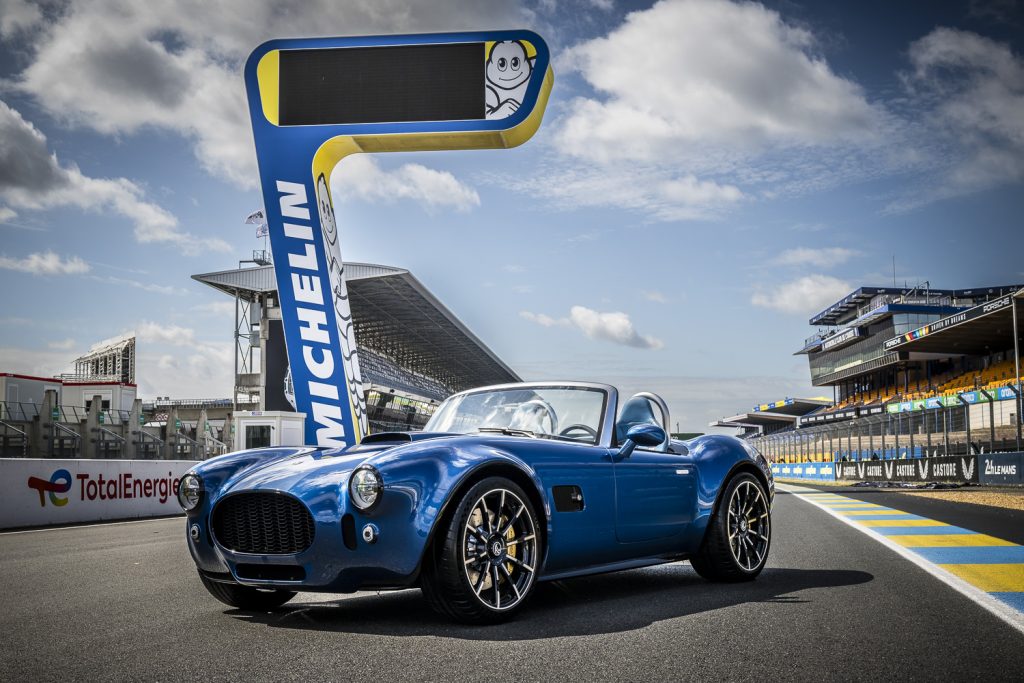
2 massive motorsport events to test both car and drivers… both very different and similar at the same time. 1 mega task of physical endurance to cover as a photographer. At one point during LMC I realised I was in my 52nd hour of shooting with only 4 hours sleep!!

